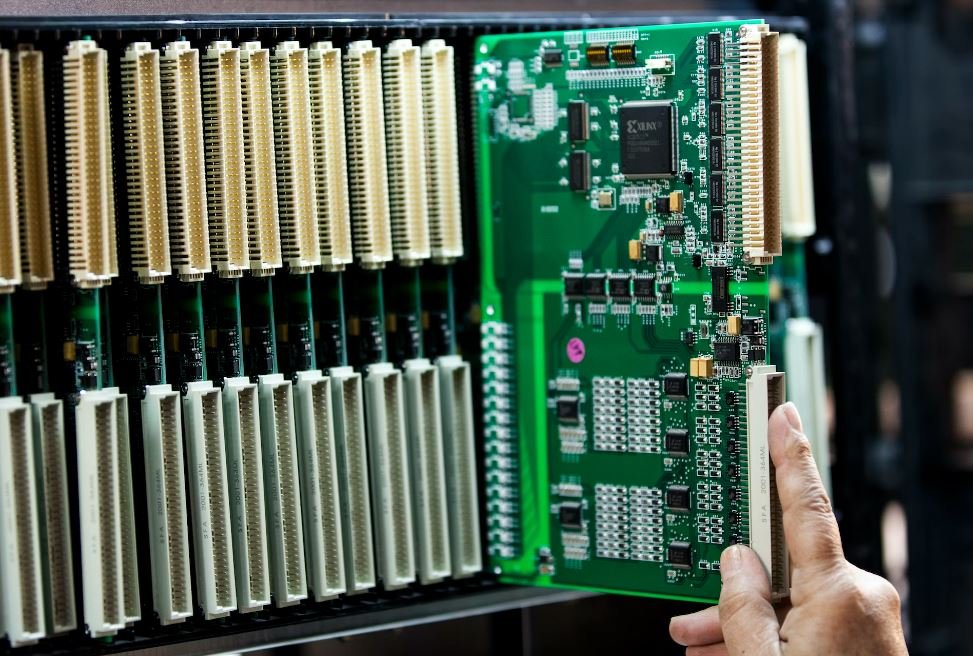Open Source AI Frameworks
Artificial Intelligence (AI) has become an integral part of our daily lives, powering chatbots, virtual assistants, recommendation systems, and more. Developing and deploying AI models requires sophisticated frameworks, and open source AI frameworks have emerged as powerful tools in this domain. In this article, we will explore the benefits of using open source AI frameworks and highlight some popular options.
Key Takeaways:
- Open source AI frameworks provide flexibility, transparency, and community support.
- Popular open source AI frameworks include TensorFlow, PyTorch, and Keras.
- These frameworks offer extensive pre-trained models and a wide range of applications.
- Open source AI frameworks facilitate collaboration and knowledge-sharing among developers.
Open source AI frameworks, such as TensorFlow, PyTorch, and Keras, have gained significant traction in the AI community. These frameworks offer a host of benefits, making them popular choices for AI development.
TensorFlow, developed by Google, is a versatile and scalable framework for building and deploying AI applications.
Benefits of Open Source AI Frameworks:
1. Flexibility: Open source AI frameworks allow developers to customize and extend the functionality as per their project requirements.
“Open source AI frameworks empower developers to tailor the models to suit their unique needs and use cases.”
2. Transparency: Open source frameworks provide complete visibility into the underlying algorithms and code, enabling developers to better understand and validate the models they build.
“Transparency ensures that developers can have confidence in the AI models and algorithms they deploy.”
3. Community Support: Open source AI frameworks foster a vibrant community of developers who actively contribute to the improvement and expansion of the frameworks.
“The strong community support ensures continuous development, bug fixes, and knowledge-sharing among AI enthusiasts.”
4. Pre-trained Models: Open source AI frameworks come with a repository of pre-trained models that significantly reduce the time and effort required to build models from scratch.
“The availability of pre-trained models accelerates the development and deployment of AI applications.”
Popular Open Source AI Frameworks:
Now, let’s delve deeper into some of the popular open source AI frameworks:
| Framework | Language |
|---|---|
| TensorFlow | Python |
| PyTorch | Python |
| Keras | Python |
TensorFlow, PyTorch, and Keras are widely used open source AI frameworks that provide extensive support for building and training AI models.
Each framework offers unique features and advantages. TensorFlow, for example, is known for its scalability and production readiness, making it suitable for large-scale deployments. PyTorch, on the other hand, is praised for its flexibility and ease of use, making it a preferred choice for researchers.
Comparison of Open Source AI Frameworks:
The table below outlines the key features and characteristics of the popular open source AI frameworks:
| Framework | Primary Features | Use Cases |
|---|---|---|
| TensorFlow | Scalability, production readiness, deployment options. | Speech recognition, image classification, natural language processing. |
| PyTorch | Flexibility, ease of use, dynamic computational graphs. | Computer vision, natural language processing, reinforcement learning. |
| Keras | Simplicity, user-friendly API, seamless integration. | Deep learning experimentation, rapid prototyping. |
Understanding the features and use cases of each open source AI framework helps developers make informed decisions for their AI projects.
In conclusion, open source AI frameworks have revolutionized the field of AI development by providing flexibility, transparency, and community support. TensorFlow, PyTorch, and Keras are among the popular open source frameworks that enable developers to build advanced AI models with ease. By leveraging their extensive pre-trained models and taking advantage of their unique features, developers can accelerate AI development and deliver cutting-edge applications.

Common Misconceptions
1. Open source AI frameworks are only for large organizations.
Many people believe that open source AI frameworks are only suitable for large organizations with vast resources and technical expertise. However, this is not true as open source frameworks can be used by anyone, regardless of the size of the organization.
- Open source AI frameworks offer a wide range of documentation and community support for beginners.
- Small startups and individual developers can benefit from the cost savings and flexibility of open source frameworks.
- Open source frameworks can be customized to fit the specific needs and requirements of any organization, regardless of its size.
2. Open source AI frameworks lack flexibility and scalability.
Another common misconception is that open source AI frameworks are not as flexible or scalable as proprietary solutions. However, open source frameworks have proven to be highly flexible and scalable, capable of handling large and complex AI projects.
- Open source frameworks like TensorFlow and PyTorch offer extensive APIs and libraries that allow developers to build and customize AI models with ease.
- Open source frameworks can leverage the power of cloud computing and distributed systems to scale AI applications as needed.
- Many open source AI frameworks have active communities that constantly contribute new features and improvements, further enhancing their flexibility and scalability.
3. Open source AI frameworks are less secure than proprietary solutions.
Some individuals believe that open source AI frameworks are less secure compared to proprietary solutions, which can lead to a higher risk of data breaches and vulnerabilities. However, this belief is often unfounded, as open source frameworks can actually provide a higher level of security.
- Open source frameworks benefit from the collective efforts of a large community of developers who constantly review and enhance the security of the code base.
- Transparency of open source frameworks allows for easier identification and patching of vulnerabilities compared to closed-source proprietary solutions.
- Organizations can implement additional security measures and audits to further enhance the security of open source AI frameworks.
4. Open source AI frameworks are difficult to learn and use.
Many people assume that open source AI frameworks are extremely difficult to learn and use, requiring advanced programming skills and a deep understanding of machine learning. However, open source frameworks can be made accessible to developers of varying skill levels.
- Open source frameworks often provide comprehensive documentation, tutorials, and beginner-friendly resources to help developers get started quickly.
- Online communities and forums contribute to a supportive learning environment where developers can seek help and guidance when encountering difficulties.
- Various online courses and educational platforms offer structured learning paths specifically designed for open source AI frameworks, making them easier to grasp.
5. Open source AI frameworks lack performance and speed.
There is a misconception that open source AI frameworks cannot achieve the same level of performance and speed as proprietary solutions. On the contrary, open source frameworks provide competitive performance capabilities and have been used to build state-of-the-art AI models.
- Open source frameworks often leverage hardware acceleration techniques, such as GPU computing, to enhance performance and speed up AI computations.
- The extensive community around open source AI frameworks contributes to continuous performance optimizations and enhancements.
- Open source frameworks have been used to build cutting-edge AI applications and have demonstrated impressive performance and speed in various benchmark tests.

Framework Popularity Comparison
Here, we compare the popularity of three leading open source AI frameworks based on the number of GitHub stars and Stack Overflow questions related to each framework.
| Framework | GitHub Stars | Stack Overflow Questions |
|—————–|————–|————————-|
| TensorFlow | 157k | 56.4k |
| PyTorch | 81.5k | 39.7k |
| Keras | 42.3k | 20.1k |
Framework Capabilities
This table showcases the diverse capabilities offered by different open source AI frameworks, ranging from natural language processing (NLP) to computer vision.
| Framework | NLP Support | Computer Vision | Reinforcement Learning |
|—————–|————–|——————|————————|
| TensorFlow | ✔️ | ✔️ | ✔️ |
| PyTorch | ✔️ | ✔️ | ✔️ |
| Keras | ❌ | ❌ | ❌ |
Framework Release Dates
Here, we present the release dates of various open source AI frameworks, giving insight into the evolution and development timeline of each framework.
| Framework | Initial Release | Latest Version |
|—————–|——————|—————-|
| TensorFlow | November 2015 | 2.3.0 |
| PyTorch | October 2016 | 1.9.0 |
| Keras | March 2015 | 2.4.3 |
Framework Community Activities
This table sheds light on the community activities surrounding these open source AI frameworks, such as the number of active contributors and the frequency of releases.
| Framework | Active Contributors | Monthly Releases |
|—————–|———————-|—————–|
| TensorFlow | 2.3k | 8 |
| PyTorch | 1.4k | 6 |
| Keras | 384 | 2 |
Framework Programming Language Support
Here, we highlight the programming languages supported by different open source AI frameworks, showcasing the versatility and accessibility they offer to developers.
| Framework | Python | Java | C++ |
|—————–|———|——-|——|
| TensorFlow | ✔️ | ✔️ | ✔️ |
| PyTorch | ✔️ | ❌ | ✔️ |
| Keras | ✔️ | ❌ | ❌ |
Deployment Environment Compatibility
This table illustrates the compatibility of open source AI frameworks with various deployment environments, including cloud platforms and mobile devices.
| Framework | Cloud Platform Support | Mobile Deployment Support |
|—————–|————————|————————–|
| TensorFlow | ✔️ | ✔️ |
| PyTorch | ✔️ | ✔️ |
| Keras | ✔️ | ✔️ |
Framework License Types
Here, we present the license types under which open source AI frameworks are distributed, which can significantly impact their adoption and commercial usage.
| Framework | License Type |
|—————–|——————————-|
| TensorFlow | Apache License 2.0 |
| PyTorch | BSD-3-Clause License |
| Keras | MIT License |
Framework Support & Documentation
This table offers insights into the support options and documentation available for developers using these open source AI frameworks.
| Framework | Official Support | Documentation Quality |
|—————–|—————————-|————————|
| TensorFlow | ✔️ | High |
| PyTorch | ✔️ | High |
| Keras | Community Support Only | Medium |
Framework Integration with Hardware
Here, we explore the integration capacity of open source AI frameworks with various hardware accelerators, enabling enhanced performance and efficiency.
| Framework | CPU | GPU | TPU |
|—————–|—————|——-|—————-|
| TensorFlow | ✔️ | ✔️ | ✔️ |
| PyTorch | ✔️ | ✔️ | ❌ |
| Keras | ✔️ | ✔️ | ❌ |
Conclusively, open source AI frameworks have democratized AI development, enabling the global community of developers to leverage powerful tools and resources. Their diversity in capabilities, thriving communities, broad programming language support, and compatibility with various deployment environments make them instrumental in driving AI innovation and adoption. By harnessing the potential of open source AI frameworks, developers can continue to push boundaries in AI research and practical applications.
Frequently Asked Questions
Question 1: What are open source AI frameworks?
Open source AI frameworks are software tools or libraries that provide a set of pre-built components and algorithms to facilitate the development and deployment of artificial intelligence models and applications. These frameworks are typically created by a community of developers and can be freely accessed, modified, and distributed.
Question 2: Why should I use open source AI frameworks?
Open source AI frameworks offer several advantages, including access to a wide range of pre-built AI models and algorithms, community support from developers worldwide, the ability to customize and extend the frameworks to suit specific requirements, and cost-effectiveness as there are no licensing fees involved.
Question 3: Which are some popular open source AI frameworks?
Some popular open source AI frameworks include TensorFlow, PyTorch, Keras, Caffe, Theano, and MXNet. These frameworks have gained significant traction in the AI community due to their robustness, flexibility, and extensive documentation.
Question 4: What programming languages are commonly used with open source AI frameworks?
Open source AI frameworks support multiple programming languages, with Python being the most commonly used language. Other languages like C++, Java, and Lua are also supported by certain frameworks. Developers can choose the language that aligns with their expertise and project requirements.
Question 5: Can open source AI frameworks be used for both research and production?
Yes, open source AI frameworks are designed to be used in both research and production settings. They provide the necessary tools and infrastructure to train AI models, experiment with new algorithms, and deploy trained models for real-world applications.
Question 6: Are open source AI frameworks suitable for beginners in AI?
While open source AI frameworks can be used by beginners, they often involve a steep learning curve, especially for individuals new to AI. However, many frameworks provide extensive documentation, tutorials, and online communities where beginners can seek guidance and support.
Question 7: Are there any limitations to using open source AI frameworks?
Open source AI frameworks may come with limitations such as performance bottlenecks, limited support for specific hardware architectures, a higher degree of complexity, and the need for significant computational resources. However, these limitations are constantly being addressed and improved upon by the open source community.
Question 8: What is the role of open source AI frameworks in deep learning?
Open source AI frameworks play a crucial role in deep learning by providing a foundation for building and training deep neural networks. They offer a wide range of pre-implemented neural network architectures and optimization algorithms specifically designed for tackling complex AI tasks.
Question 9: Can open source AI frameworks be used for natural language processing (NLP)?
Yes, many open source AI frameworks have built-in support for natural language processing tasks. These frameworks offer pre-trained models, tokenization tools, and other utilities specifically tailored for NLP applications.
Question 10: How can I contribute to open source AI frameworks?
Contributing to open source AI frameworks involves actively participating in the community by submitting bug reports, fixing issues, enhancing documentation, creating tutorials, and developing new features. Most frameworks have well-defined contribution guidelines and welcome contributions from developers with various levels of experience.




